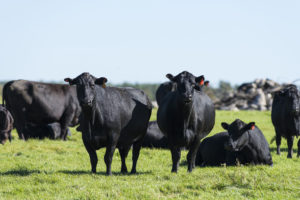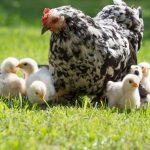 Whether you buy a cattle mineral off the shelf at a retail store, walk into your local dealer and request their ‘standard’ mineral or work closely with your nutritionist to select a mineral supplement for your herd, sorting through the various mineral types can sometimes be a daunting task.
Whether you buy a cattle mineral off the shelf at a retail store, walk into your local dealer and request their ‘standard’ mineral or work closely with your nutritionist to select a mineral supplement for your herd, sorting through the various mineral types can sometimes be a daunting task.
It may even be a purchase decision that’s so complex you simply cling to the generic or most popular cattle mineral available in your area.
But, the generic or popular option may not be the best choice for your herd’s mineral requirements. If you’re not feeding a quality supplemental mineral, you may see the consequences of mineral deficiencies later in the form of decreased calf weaning weights, small or weak calves, decreased milk production, reduced or delayed conception and even poor immunity.
Not all cattle minerals are created equal, and it’s important to recognize the differences in minerals that are out there. Even though mineral nutrition is complicated, you can easily evaluate or ask questions about a few different elements of a mineral supplement.
Here are three things to look for in your cattle minerals:
1. Balanced cattle mineral nutrition
A complete mineral should contain the proper balance and ratios of all 14 essential cattle minerals. Those minerals include calcium, copper, cobalt, iodine, iron, magnesium, manganese, molybdenum, phosphorus, potassium, selenium, sodium, sulfur and zinc.
A proper zinc-to-copper ratio is one of the biggest considerations when choosing a mineral, with a ratio of 3-to-1 being preferable. Zinc and copper are commonly deficient microminerals in cattle, and the ratio is critical because of how closely zinc and copper absorption are tied.1
2. Large particle size ingredients and rain protection
Rain and other elements can quite literally wash a mineral investment down the drain, or can alternately turn your mineral into a brick-type substance which cattle often refuse to eat.
A weatherized mineral should not just be water-resistant, it should be wind-resistant as well. You don’t want the particles to be so small that the wind picks them up and blows them away. A weatherized mineral that includes a larger particle can remedy this problem.
The biggest drawback of a non-weather resistant mineral is that cattle just aren’t going to consume it. Daily mineral needs to be consumed, and if you’re not seeing consumption because the mineral has been turned into a hard block or because the particles are being blown away, then your investment is a loss.
3. Organic, bioavailable mineral sources
Another important aspect when choosing a mineral is to make sure it has bioavailable mineral sources. The bioavailability of a mineral source alters the absorptive ability of the trace minerals eliciting their full benefit.
Mineral sources that are more bioavailable may be a bit more costly, but they can be a good fit for herds with marginal trace mineral status, consistent reproduction issues, overall herd health problems, foot problems or in areas with forage or water issues.
Some key trace minerals that you might look to for bioavailability would be zinc, manganese, copper, and cobalt. These minerals are required for a variety of functions including, but not limited to, immunity, reproduction, growth and fiber digestion.
Watch the video below to see the difference between Wind and Rain® Storm® cattle mineral and a non-weatherized version.



